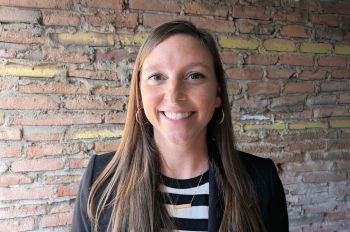A Draw to the Futuristic
As a student at Morton College, Victor Quiroz joined his college’s chapter of the Society of Hispanic Professional Engineers (SHPE). One day Quiroz visited the Illinois Institute of Technology campus to coordinate logistics with Illinois Tech students for a joint event that he was helping to organize.
“I was changed forever,” says Quiroz. “The students of the Illinois Tech chapter were so organized, motivated, and welcoming that I couldn’t help but think, ‘Wow, this is what it looks like to have a room full of engineers execute a task.’ At the time, I concluded that if I wanted to become an engineer, I had to rub shoulders with the students at Illinois Tech, and on that very day I began contemplating my application.”
After his second year at Morton, Quiroz transferred to the Department of Biomedical Engineering at Illinois Tech.
While he had often dedicated his summers to science-focused programs including working as an after-school underwater robotics instructor at Heritage Middle School and Freedom Middle School in Berwyn, IL, and as a science entertainer at the Museum of Science and Industry, at Illinois Tech Quiroz found opportunities to work directly on research.
He first gained experience in the laboratory with Assistant Professor of Biomedical Engineering Abhinav Bhushan and then participated in hands-on research through the competitive Armour R&D PURE program for two terms working with Professor of Biomedical Engineering Georgia Papavasiliou. He was drawn to the futuristic aspects of the work.
“I worked on being able to use hydrogels, a material similar to contact lenses, to differentiate stem cells to better heal degenerative disease,” says Quiroz.
After graduating from Illinois Tech, Quiroz was accepted into the National Institute of Health’s Postbaccalaureate Research Education Program through which he began research at Johns Hopkins University. Now, he is continuing his work there as a Ph.D. student.
“At Hopkins I do research on protecting cell grafts, like insulin-producing cells, using similar materials in hopes to provide a permanent treatment/cure for Type 1 diabetes,” says Quiroz.
Quiroz continues to be active in SHPE. “Whether it’s doing outreach to high schools or matching college students with employers from Fortune 500 companies, I help to assist students in their careers as others have helped me.”
Quiroz says he hopes to combine science education with his passion for experimental discovery and engineering by one day becoming a professor at a university.
“There is just so much cutting-edge work being done everywhere that will revolutionize the way we think about personalized medicine,” he says. “I still have a lot to learn, but one day I, too, will be able to contribute to the effort of improving health care.”



